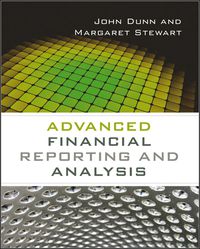







On January 1, Year 1, the general ledger of a company includes the following account balances: Credit Debit $ 59,900 27,400 $ 3,400 Accounts Cash Accounts Receivable Allowance for Uncollectible Accounts Inventory Notes Receivable (5%, due in 2 years) Land Accounts Payable Common Stock Retained Earnings Totals 37,500 26,400 167,000 16,000 232,000 66,800 $318, 200 $318, 200 During January Year 1, the following transactions occur: January 1 Purchase equipment for $20,700. The company estimates a residual value of $2,700 and a six-year service life. January 4 Pay cash on accounts payable, $10,700. January 8 Purchase additional inventory on account, $94,900. January 15 Receive cash on accounts receivable, $23,200. January 19 Pay cash for salaries, $31,000. January 28 Pay cash for January utilities, $17,700. January 30 Sales for January total $232,000. All of these sales are on account. The cost of the units sold is $121,000. Information for adjusting entries: a. Depreciation on the equipment for the month of January is calculated using the straight-line method. b. The company estimates future uncollectible accounts. The company determines $4,200 of accounts receivable on January 31 are past due, and 50% of these accounts are estimated to be uncollectible. The remaining accounts receivable on January 31 are not past due, and 3% of these accounts are estimated to be uncollectible. (Hint: Use the January 31 accounts receivable balance calculated in the general ledger.) c. Accrued interest revenue on notes receivable for January. d. Unpaid salaries at the end of January are $33,800. e. Accrued income taxes at the end of January are $10,200. Exercise 7-21B Part 2 2. Record the adjusting entries on January 31 for the above transactions. (If no entry is required for a particular transaction/event, select particular "No Journal Entry Required" in the first account field.) No Date General Journal Debit Credit 1 January 31 Depreciation Expense Accumulated Depreciation 2 January 31 Bad Debt Expense Allowance for Uncollectible Accounts 3 January 31 Interest Receivable X Interest Revenue 4 January 31 33,800 Salaries Expense Salaries Payable 33,800 5 January 31 10,200 Income Tax Expense Income Tax Payable 10,200 Exercise 7-21B Part 3 3. Prepare an adjusted trial balance as of January 31, Year 1. Adjusted Trial Balance January 31, Year 1 Accounts Debit Credit Cash x Accounts Receivable Allowance for Uncollectible Accounts Inventory x Interest Revenue Note Receivable Land x x Equipment Accumulated Depreciation Accounts Payable Salaries Payable Income Tax Payable Common Stock Retained Earnings Sales Revenue Cost of Goods Sold Income Tax Payable Salaries Expense Utilities Expense Depreciation Expense Bad Debt Expense Income Tax Expense Totals $ 0 $ 0 *Red text indicates no response was expected in a cell or a formula-based calculation is incorrect: no points deducted. Exercise 7-21B Part 4 4. Prepare a multiple-step income statement for the period ended January 31, Year 1. Multiple-Step Income Statement For the month ended January 31, Year 1 Sales Revenue $ 232,000 Cost of Goods Sold (121,000) Gross Profit $ 111,000 Expenses Salaries Expense Utilities Expense Depreciation Expense Bad Debt Expense 17,700 OOON Total Operating Expenses Operating Income Interest Revenue 17,700 93,300 Income before taxes OOOOOO 93,300 Income Tax Expense Net Income $ 93,300 *Red text indicates no response was expected in a cell or a formula-based calculation is incorrect; no points deducted. Exercise 7-21B Part 5 5. Prepare a classified balance sheet as of January 31, Year 1. (Deductible amounts should be indicated with a minus sign.) Balance Sheet January 31, Year 1 Assets Liabilities Cash Accounts Receivable x Accounts Payable X Salaries Payable x Income Tax Payable Less: Allowance XOOOO Inventory 0 Total Current Liabilities Stockholder's Equity Total Current Assets 0 Land Common Stock XX Equipment x Retained Earnings 0 Notes Receivable X X Total Stockholders' Equity Total Assets $ 0 Total Liabilities and Stockholders' Equity *Red text indicates no response was expected in a cell or a formula-based calculation is incorrect; no points deducted. $ 0 Exercise 7-21B Part 6 6. Record closing entries. (If no entry is required for a particular transaction/event, select "No Journal Entry Required" in the first account field.) No Date General Journal Debit Credit 1 January 31 x x 2 January 31 a-1. Calculate the return on assets ratio for the month of January. Return on Assets Ratio Return on Assets Ratio Choose Numerator Net Income Choose Denominator Average Total Assets Return on assets 0 *Red text indicates no response was expected in a cell or a formula-based calculation is incorrect; no points deducted. a-2. If the average return on assets for the industry in January is 2%, is the company more or less profitable than other companies in the same industry? More profitable Less profitable Requirement 2: b-1. Calculate the profit margin for the month of January. Profit Margin Choose Numerator Choose Denominator Profit Margin Net Income Net Sales Profit Margin X + x = 0 *Red text indicates no response was expected in a cell or a formula-based calculation is incorrect; no points deducted. b-2. If the industry average profit margin is 5%, is the company more or less efficient at converting sales to profit than other companies in the same industry? More efficient Less efficient Requirement 3: C-1. Calculate the asset turnover ratio for the month of January. Asset Turnover Ratio Choose Numerator Choose Denominator Asset Turnover Ratio Net Sales Average Total Assets Asset Turnover + 0 times *Red text indicates no response was expected in a cell or a formula-based calculation is incorrect; no points deducted. c-2. If the industry average asset turnover is 0.4 times per month, is the company more or less efficient at producing revenues with its assets than other companies in the same industry? More efficient O Less efficient














